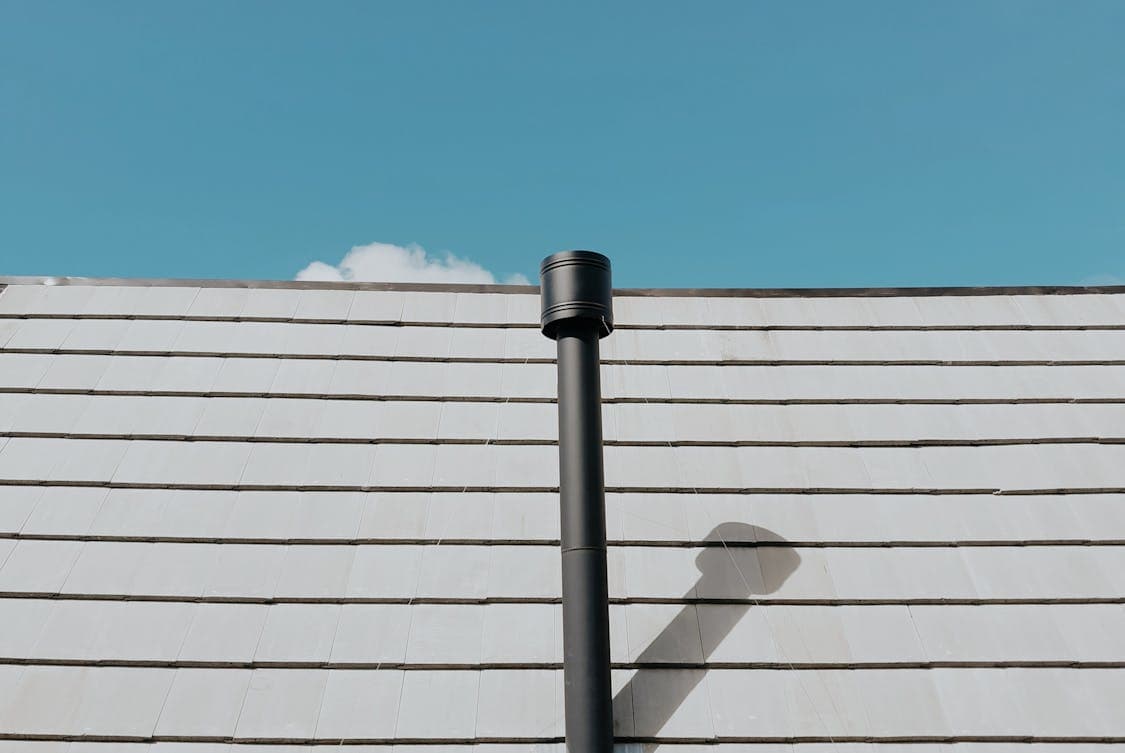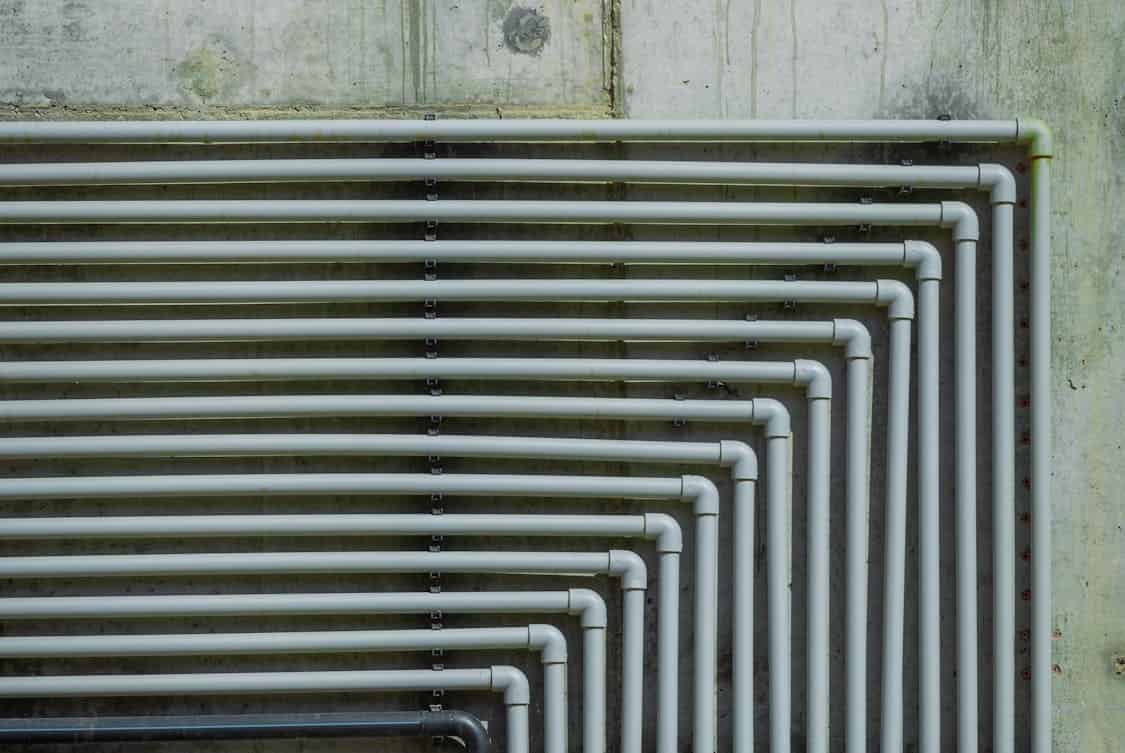Your plumbing gets water in and waste out, keeping you comfortable and safe. Understanding how it works helps you quickly recognize and address problems, like clogged pipes.
Home plumbing systems consist of two subsystems: the supply system and the drainage system. The supply system operates under pressure and delivers water to appliances, while the drainage system uses gravity and venting to remove wastewater.
Water Supply
The supply system brings fresh, clean water into your home. This includes pipes that carry in water from your city or county water service or, in the case of a private well, from the pump and filtration system itself. These pipes connect to your water meter and water main. From there, a series of smaller supply lines carry water to your sinks, toilets, appliances, and other fixtures around the house.
This is one of the two basic subsystems that make up a plumbing system, the other being the drainage system. Water flows in and out of each at different rates, with the supply system working under pressure to move water quickly from your water meter to your fixtures, while the drain-waste-vent (DWV) system uses gravity to move wastewater away from appliances and into your sewage or septic system.
Both systems require a lot of complex machinery and components to keep everything functioning properly. Knowing a little bit about how they work can help you address plumbing problems, especially during an emergency. You can also learn enough to understand why some issues arise and what might be causing them.
Understanding a bit about plumbing basics can also help you save money by not calling plumbers for every little issue that arises. You can fix some problems yourself and know when it’s time to call a plumber Cambridge service for major repairs or issues that you cannot resolve on your own.
Another benefit of learning about plumbing is that it can be interesting and even make for a conversation piece with others. You can impress your friends and family with your knowledge of water supply and drainage, and you might find that it’s a great way to start conversations about home renovations and upgrades.
The basic principles of how your plumbing system works are simple, and the same basic rules apply in all homes. The key is to have a complete system that combines the best of what each type of pipe has to offer. Having the right water treatment options and using good plumbing practices can help you avoid issues like low water pressure, clogs, and other common issues that plague most households.
Drainage
The plumbing system does two basic things: it brings fresh water in and takes waste water away. The supply systems connect all the faucets and appliances that dispense water, while the drainage system carries wastewater to the sewer. Each system must never intersect, because mixing clean water with contaminated waste would cause all sorts of problems, including disgusting messes and potentially serious health issues. Thankfully, the drain and venting systems ensure this doesn’t happen by keeping the two subsystems separate.
The main job of the plumbing drain system is to remove wastewater from all fixtures in your home, such as sinks, bathtubs, showers, dishwashers, and toilets. The system uses pipes to transport this water to the sewage system, and it also includes devices to stop the flow of liquid waste if there’s a problem. This wastewater usually contains food particles, cleaning chemicals, and — worst of all — sewage, which can lead to dire health consequences and expensive repairs if it leaks into your house.
To keep the drainage system working properly, it’s important to understand how it works. First, drain lines must be sloped correctly. If there is too little slope, then standing water can build up and create clogs. The ideal slope is one-quarter inch drop per foot of horizontal run for pipes three inches or larger in diameter.
Your drain lines also include a venting system, which lets air into the pipes to help maintain an efficient flow of wastewater. Without it, the line can fill up with soap scum and other residues that will prevent water from flowing properly. Finally, every fixture drain has a trap, which is typically a curved section of pipe that’s shaped like the letter,,P” or,,U.” These are necessary to prevent sewer gasses and odors from entering your home.
The venting system also helps keep the drain and supply systems separate by sending air into the drain pipe to push water down and keep it moving. If the ventilation system gets clogged, however, it can create problems. This is why it’s essential to keep an eye out for signs of a venting issue, such as birds building nests in your gutters.
Venting

A home’s plumbing system is an intricate network of pipes meant to bring fresh water in and take wastewater out. It’s a marvel of natural laws and principles such as gravity, pressure, and water seeking its own level. But it’s not magic, and understanding the basics of how your plumbing works can help you spot issues early on and prevent larger problems down the road.
Most people think about a home’s plumbing in terms of the supply and drainage systems, but a plumbing system also includes a venting component. The venting system connects to the waste drainage piping and performs a critical role, keeping the potable water supply separate from the wastewater drains.
Without the venting system, sewer gases would routinely seep into the water supply pipes and contaminate your household water. The venting system keeps this from happening by directing sewer gas out through your roof. It also ensures that the water-trap seals in sink and toilet drains stay filled with water, blocking odors and gases from entering living spaces.
Venting systems do other important things, as well. They regulate air pressure in the plumbing pipes, preventing negative pressure conditions that can cause sluggish drains and blockages. They also allow air to follow waste down drains, preventing the buildup of odor-causing methane and hydrogen sulfide. And finally, they direct odors and gases away from living areas, ensuring that these potentially dangerous substances don’t seep into your home.
There are many different types of venting systems used in homes, but the most common are wet-stack vented groups or individual vents attached to each fixture. A wet-stack vented group is usually a bathroom drain, shower/tub, and toilet on one floor lined up next to each other, with a single vent pipe connecting them all. Individual vents can be used for fixtures like kitchen sinks and laundry rooms, or you can use a waste-stack vented system that lines up drains on multiple floors of your home.
Regardless of which type of venting you have, all of them need to be kept clear of obstructions in order to work properly. For this reason, it’s important to keep an eye out for signs of blocked or damaged vents, such as a strong sewer smell in your home. Clogged or damaged vents can lead to a variety of serious plumbing problems, so you should always check and maintain them regularly.
Water Heater
Modern plumbing systems rely on two separate but interconnected systems: the water supply system and the drainage system. The water supply system brings in freshwater from the city or your well and distributes it to your fixtures and appliances. The drainage system takes wastewater and waste away, using gravity to move it downhill to the septic tank or sewer line.
Most homes have a water meter that records the amount of water you use. It also usually has a main water shut-off valve, which is located close to the meter or under the sink. In the event of a plumbing emergency, closing this valve can prevent a major water flood in your home.
Your plumbing pipes are like the highways that carry water to and from your fixtures and appliances. Pipes are made of a variety of materials, including copper, PVC, and PEX. They connect to each other with specialized fittings that ensure leak-proof, secure connections. Fixtures and appliances are the end points of your plumbing system, such as sinks, bathtubs, showers, toilets, dishwashers, and washing machines. Modern fixtures often have innovative features that promote conservation, such as low-flow faucets and dual-flush toilets.
A key component of your plumbing system is the drain-waste-vent system, which carries wastewater and sewage from your fixtures and appliances to the sewer line or septic tank. It includes the drain lines that run to and from each fixture, as well as vent pipes that release excess air pressure to maintain proper flow.
Understanding how your plumbing system works can help you keep it in good condition and spot problems before they become serious. However, it is important to remember that plumbing is a trade, and only licensed plumbers have the training, tools, and experience to work on it. For this reason, it’s always best to call a professional for any plumbing issues you can’t handle yourself. With a little knowledge, you can be an empowered homeowner who knows when to take matters into your own hands and when to call in the experts.










